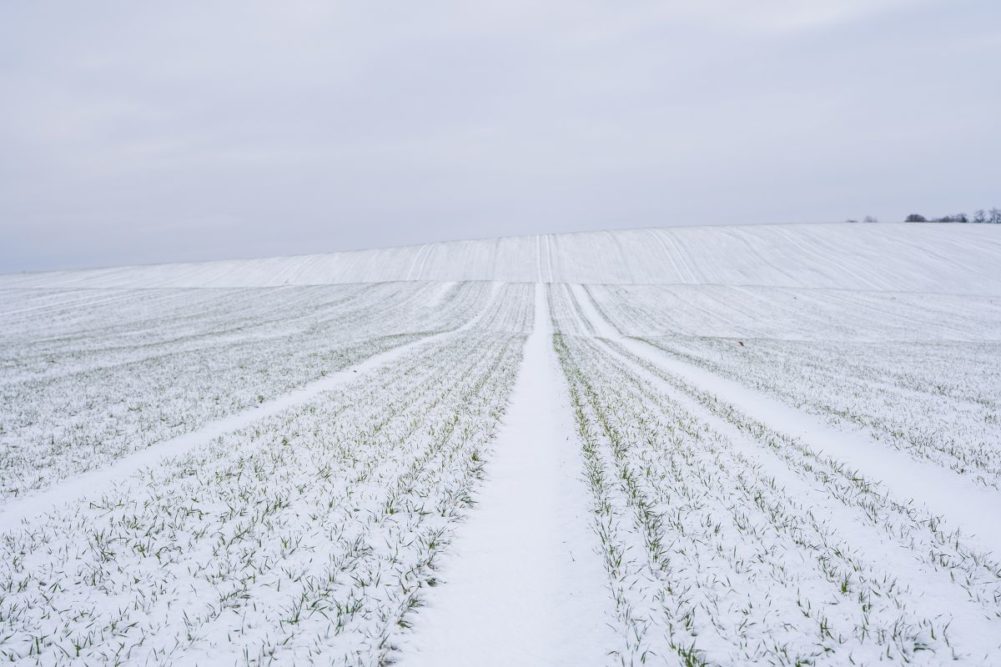WASHINGTON, DC, US — In monthly crop condition updates, the US Department of Agriculture indicated hard winter wheat conditions were a mixed bag, improving in the top production state of Kansas, but mostly declining elsewhere.
Several state and regional USDA offices release monthly updates during the winter pause in weekly state and national Crop Progress reports. A look around the horn of the primary hard winter wheat production states made clear the central Plains of Kansas and Nebraska benefited from recent rain and snow events. But several other states reported worsening conditions, mostly due to a lack of moisture. Commentary accompanying the updates indicated some freeze damage in northern Texas where fields had little or no blanket of snow for protection against freezing temperatures.
The USDA in Manhattan, Kansas, US, rated the Sunflower State’s dormant winter wheat crop as of Jan. 28 in 8% excellent condition, 46% good, 31% fair, 11% poor and 4% very poor. The crop in 54% good-to-excellent condition was a marked improvement from 43% good-to-excellent in the Jan. 2 update. Kansas moisture bank balances were in far better shape than any time during the 2022 and 2023 crop years.
Topsoil moisture supplies rated 4% very short, 16% short, 65% adequate and 15% surplus, the National Agricultural Statistics Service of the USDA said, while subsoil moisture supplies were rated 11% very short, 32% short, 49% adequate and 8% surplus. The Department’s latest US Drought Monitor appraisal pegged Kansas winter wheat in drought at 37% as of Jan. 23, down from 58% on Dec. 19.
The USDA in Oklahoma City said winter wheat as of Jan. 28 was 55% grazed, up from 36% a year earlier, and rated it 11% excellent, 52% good, 28% fair, 7% poor and 2% very poor. At 63% good-to-excellent, conditions had deteriorated slightly from 67% on Dec. 31. January rainfall varied widely in Oklahoma from 3.77 inches in the Southeast crop district to 0.93-inch in the Panhandle. January temperatures in Oklahoma also varied widely from 72° at Waurika Jan. 11 to negative 15° Jan. 16 near Vinita.
In Texas, the USDA’s Austin office indicated freeze damage in small grains had been observed in northern parts of the state. Hessian fly larvae was observed in wheat fields in the Blacklands region. Drought areas were mostly to the south, below typical wheat production areas. Several Texas regions received rain in January, some up to 15 inches. Winter wheat was 15% headed by Jan. 28 versus 4% a year earlier. Texas winter wheat was rated 42% in good-to-excellent condition, 32% fair and 26% poor to very poor. That was a slight improvement from 40% good-to-excellent in the office’s previous report but a decline from 46% on Nov. 26.
Winter wheat dormant in fields in eastern Colorado was 63% in good-to-excellent shape, 26% fair and 11% poor to very poor. Colorado wheat was 61% good-to-excellent a month earlier. January proved to be dry and cold in the Centennial State with most areas receiving less than one inch of moisture. In its review of the Jan. 23 US Drought Monitor, the USDA said 11% of Colorado wheat areas were in some stage of drought at the end of January compared with 3% on Dec. 19.
Good-to-excellent conditions on Jan. 28 were 70% in Nebraska (48% a month earlier), 53% in South Dakota (54%) and 41% in Montana (all good; 43% on Dec. 31). The latter state recorded temperatures averaging 4° to 8° below normal, the High Plains Regional Climate Center said, and precipitation levels were at or below normal levels. Montana winter wheat area in drought expanded to 25% by Jan. 23 from none on Dec. 19.
“More moisture was needed,” the USDA’s Montana Field Office said. “Winter wheat was suffering with current snow depth at 4 inches at the most. The existing snow was expected to dissipate with the upcoming warmer weather forecasts.”
In soft red winter wheat country, good-to-excellent ratings were 65% in Missouri (73% on Dec. 31) and 75% in Illinois (55%).
Wheat futures on the Chicago Board of Trade closed higher after the monthly condition reports were issued. Hard wheat futures gained the most with Kansas City contracts posting 8¢ to 12½¢ a bushel gains; Chicago futures were up 5½¢ to 12¢ a bushel.





